Fabric material not only influences the appearance of the dress but also relates to comfort and suitability for different occasions. So that’s why we often discuss what the best fabrics for dresses are.
Now let’s discuss the different types of dress fabric with pictures.
Four considerations when choosing dressmaking fabrics
Season
The season will affect your choice of fabric. For example, in winter, you may want to choose a fabric with good thermal properties, such as wool or fleece. In summer, however, you may be more inclined to opt for lightweight, breathable fabrics such as cotton or chiffon.
Occasion
Different fabrics suit different occasions. For example, wedding dress manufacturers often choose silk and chiffon to achieve an elegant and romantic look. Meanwhile, cotton and denim are more popular choices for casual and semi-formal dresses due to their comfort and versatility.
Graphic design
If you need custom patterns and designs on a skirt, you need to consider how the pattern will be presented and how well the fabric will match. This is because some printing methods may not work well with certain fabric materials.
For example, you can apply DTG printing to most fabric materials such as cotton or poly-cotton blends. However, fabrics with a rough texture or porous structure, such as linen, may not be suitable as it may affect the clarity of the pattern.
Also, if you want to embroider on fabric, avoid thinner fabrics like silk and chiffon. Because these types of fabrics have a large distance between fibers, this may cause the fabric to be stretched, twisted or broken.
Other factors
Skin-friendly fabrics can reduce the risk of possible skin allergies or uncomfortable reactions. In general, natural fibers like cotton, linen, and silk tend to be more skin-friendly because they don’t contain chemical additives.
Furthermore, some fabrics have specific care and cleaning requirements, which may involve special ironing temperatures and appropriate washing methods. If you prefer to avoid dealing with these issues, you may consider choosing fabrics that are easier to maintain.
Eight kinds of plant fiber of dress fabrics
Plant fibers include cotton, flax, and hemp, among others. For environmentally-conscious consumers, opting for dresses made from these materials is a common practice.
Cotton
Cotton dresses are famous for their comfort, making them one of the most widely used materials for dresses. Here are several types of cotton fabric for dresses:
Organic cotton

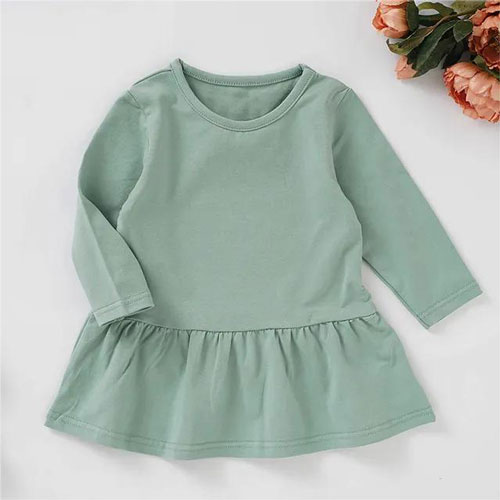
Organic cotton grow on organic farms without chemical pesticides or fertilizers. These material dresses are eco-friendliness and are typically gentler on the skin, making them a common choice for baby and toddler dresses.
This fabric tend to be slightly more expensive and often require certifications like GOTS and OCS to verify their sourcing and quality. You can see the certifications on labels or packaging.
Muslin cotton

Muslin cotton is a lightweight and breathable fabric, and it offers a high level of softness. Manufacturers typically produce it from finely woven cotton fibers, ensuring comfort when wearing it, especially in warm weather.
Corduroy cotton
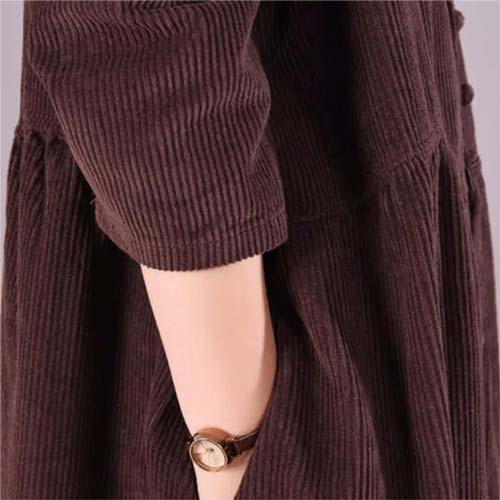
This material has a smooth surface with distinct ribbed textures. Corduroy dresses also come in a wide variety of styles and silhouettes, including corduroy pinafore dresses and long shirt-style dresses, offering a versatile choice for different fashion preferences.
Denim cotton

Denim is a sturdy cotton fabric, and it has high durability and resistance to wear and tear. Thanks to its relatively rigid texture, denim dresses offer excellent body-contouring effects. This fabric typically exhibits a unique appearance in shades of blue or deep indigo with distinctive diagonal twill patterns.
Denim dresses come in various styles and lengths, suitable for a wide range of occasions, making them a classic staple in the world of fashion.
Velvet cotton
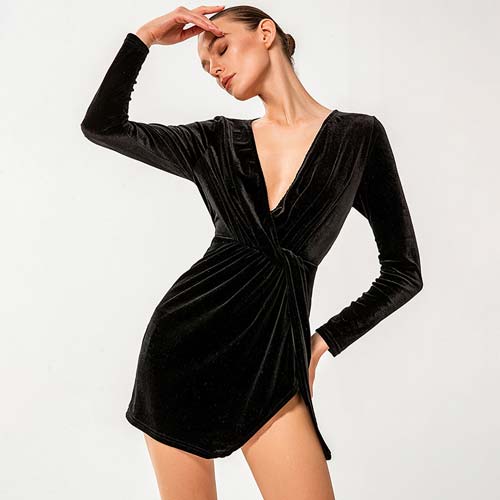
Velvet is typically made from materials such as cotton, silk, satin, or synthetic fibers. It has a special softness and rich texture, making it incredibly comfortable to the touch. Additionally, it gives the fabric a unique sheen and color-changing effect.
People often choose velvet for crafting high-quality garments like evening gowns because it can lend the wearer a glamorous and elegant appearance.
Flannel cotton
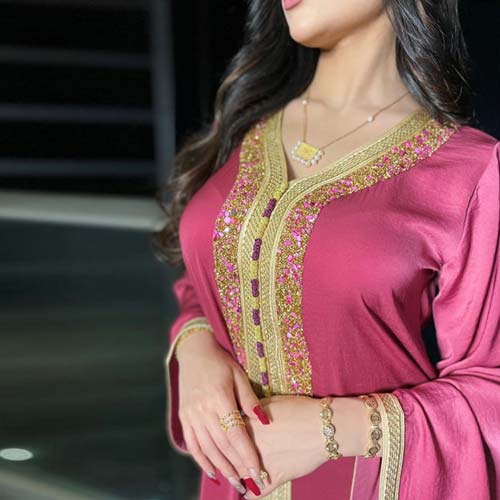
This is a soft and napped woolen fabric woven with coarse combed yarn. Its surface is covered with a layer of full and fine nap, without visible weave patterns, resulting in a soft and smooth texture. Thin varieties of it can also be used as a fabric for shirts and dresses.
Linen
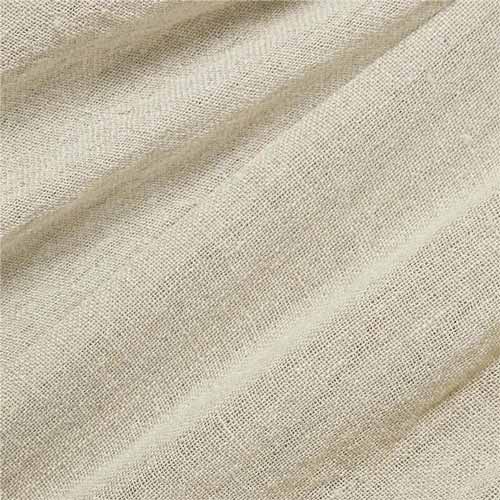
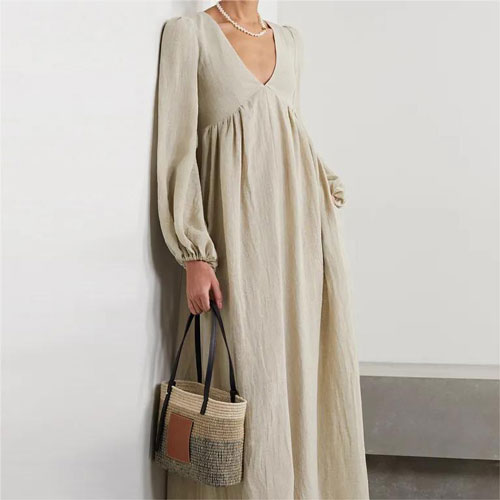
This is a natural fiber fabric characterized by its unique woven stripes. The delicate and lightweight linen fabric imparts a soft touch to dresses and is highly breathable, making it ideal for crafting spring and summer clothing. Typically, dresses made from this material feature loose-fitting designs to enhance comfort.
Ramie
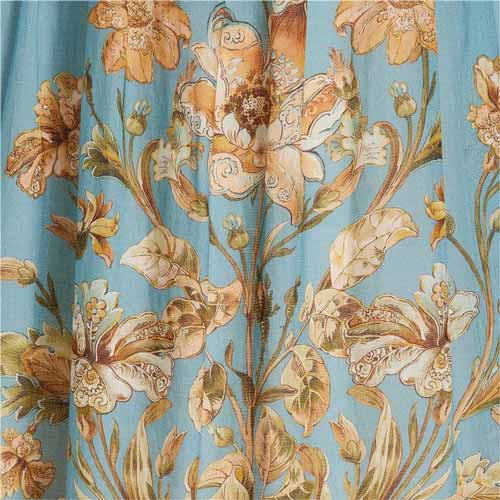
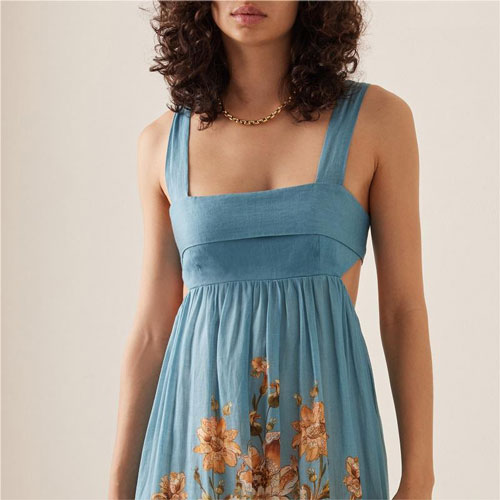
This fiber comes from the flax plant and is the longest and finest among all flax fibers, commonly known as the “king of natural fibers”. Dresses made from this material have a texture even more translucent and lighter than those made from flax.
Two types of animal fiber of dress fabrics
Animal fibers include materials like silk, wool, etc. Dresses made from these materials typically come at a relatively higher price.
Wool
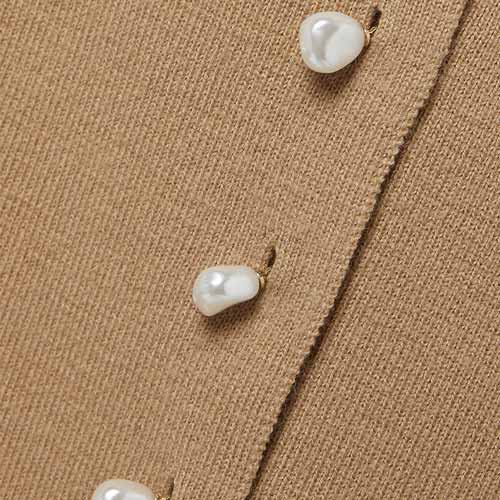

Wool and woolen fibers are famous for their warmth and are suitable for dresses in the fall and winter seasons. The durability and insulating properties of wool make it worthwhile, despite its higher cost.
Silk
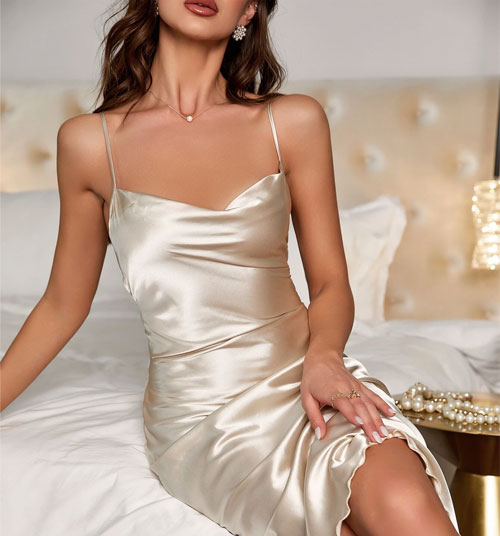
Dressmakers primarily derive silk dresses from mulberry silk but can also use other types of silk fibers like tussah silk or cassava silk. Different types of silk fibers result in distinct textures and color effects.
Due to its high quality and luxurious feel, silk dresses are suitable for special occasions such as evening gowns, while also being an ideal choice for crafting comfortable nightgowns.
Seven types of synthetic fiber of dress fabrics
Synthetic fibers include rayon, Tencel, polyester, spandex, etc. Most synthetic textiles are easy to care for, and they often come at an affordable price.
Leather

Leather dresses are typically categorized into two materials: synthetic leather and genuine leather. Most leather dresses on the market are predominantly made from synthetic leather. Primary materials like polyurethane (PU) or polyvinyl chloride (PVC) mimic the appearance and texture of genuine leather, often coming at a lower price and with increased durability.
Polyester
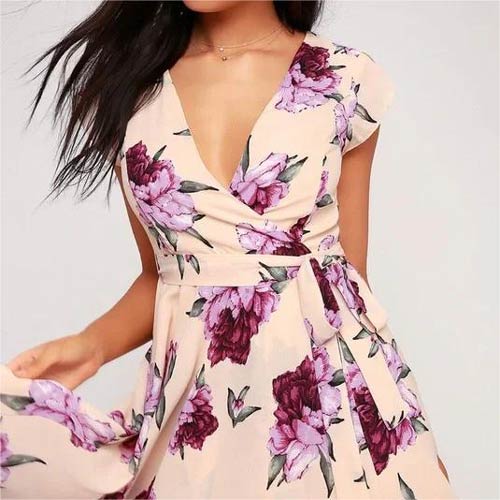
Polyester fibers are favored by many clothing manufacturers for creating a wide variety of dress styles due to their durability, wrinkle resistance, and ease of maintenance.
However, a notable drawback is their poor breathability. This can lead to discomfort, especially in hot and humid conditions.
Rayon
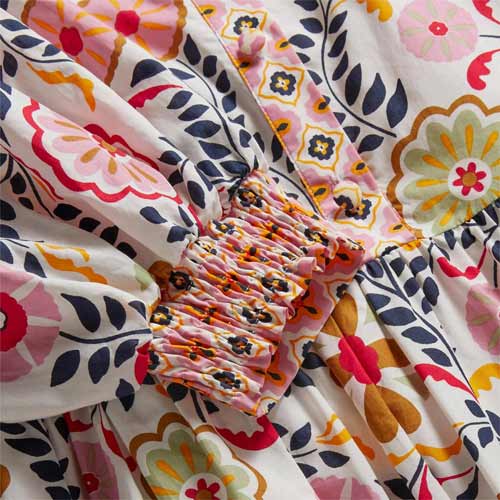
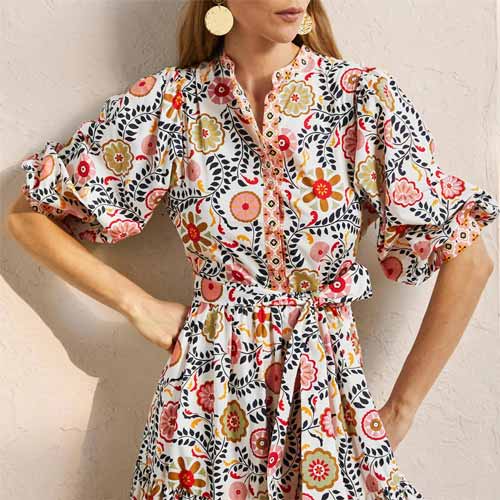
Rayon is a regenerated fiber made from various short-staple cotton or other materials using dissolving and spinning techniques. The fabric has a silky touch and an excellent drape.
However, rayon also has some drawbacks. One of them is that it can be challenging to control shrinkage, which means extra care is needed during cleaning and maintenance. Another downside is that if there are defects on the fabric surface, they may be more noticeable.
Taffeta

Taffeta is typically made from silk or synthetic fibers like acetate, and it’s considered a high-end plain-woven fabric often used for formal occasions such as ball gowns and wedding dresses.
It’s important to note that taffeta is prone to permanent creasing, so handling and maintenance require special care.
Chiffon
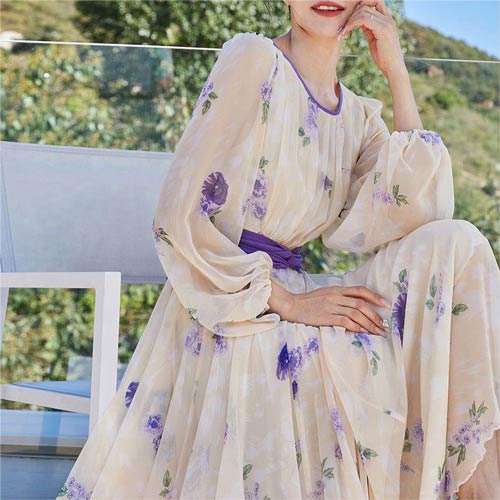
Chiffon is considered the best fabric for summer dresses. It can be divided into silk chiffon and spun silk chiffon. The former is made from 100% mulberry silk or natural fibers, prone to yellowing and tearing. The latter is made from 100% polyester fabric. And it is easy to maintain.
Spun silk chiffon provides excellent breathability and is known for its lightweight and soft qualities. People typically use it to craft women’s summer dresses.
Lace
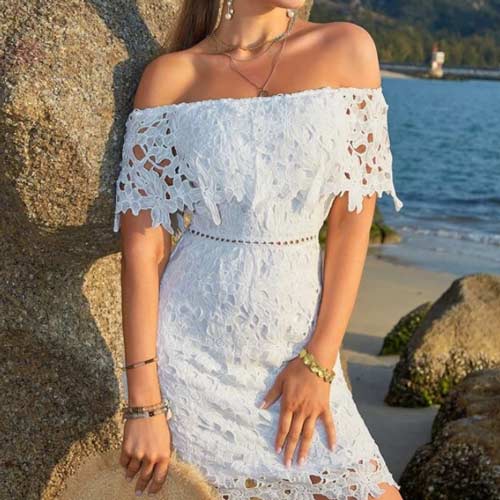
People adore lace dresses for their intricate details and patterns. They widely regard them as symbols of elegance, making lace dresses popular choices for special occasions like weddings, evening events, and parties.
It’s important to note that lace often comes with a certain level of sheerness, so choosing appropriate undergarments is essential.
Triacetic Acid

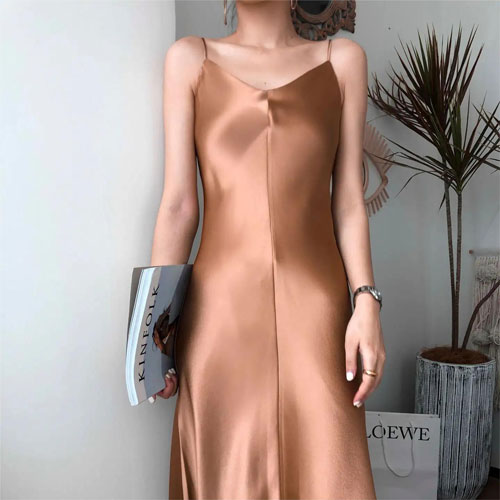
Triacetate fiber is a semi-synthetic fiber derived from natural wood pulp. It is a new type of fabric that combines nature and high technology, developed by the Japanese company Mitsubishi Chemical Group. It closely resembles the appearance of silk and has a soft texture with a slight stretch. And it is relatively expensive.
Note that this fabric has poor abrasion resistance, so it should be worn with care.
JingSourcing is a leading sourcing company in China that has successfully assisted numerous clients in importing various dresses. Our success stems from our in-depth knowledge of different fabrics for dresses and our strong relationships with many dress manufacturers.
We can quickly connect you with the right manufacturers and help you choose the most suitable fabric based on your requirements. Additionally, we excel in printing or embroidering patterns on dresses, offering you a comprehensive solution for your dress-sourcing needs.

Hello! I just would like to give you a huge thumbs up for the excellent information you have got right here on this post. I’ll be coming back to your blog for more soon.